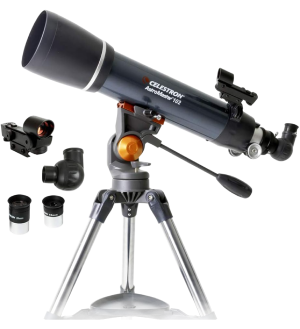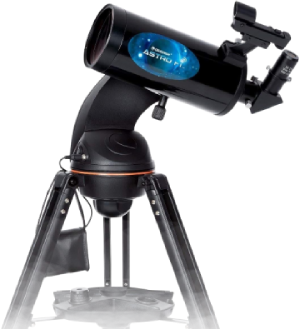The Celestron Astro Fi 102 is an excellent entry-level to intermediate smart telescope that blends technology with functionality. Designed for hobbyist astronomers and beginners alike, this Maksutov-Cassegrain telescope offers clear views of the Moon, Jupiter, Saturn, Venus, and even some brighter deep-sky objects like the Orion Nebula or Andromeda Galaxy under good skies.
Why Choose the Celestron Astro Fi 102?
Objective Lens Diameter : 102 Millimeters
Power Source : Adapter
Optical Tube Length : 381 Millimeters
Control your telescope via integrated WiFi using the free Celestron Sky Portal app for iPhone, iPad, and Android devicesSee On Amazon

What makes it particularly attractive is its Wi-Fi enabled control via smartphone or tablet, making it incredibly user-friendly. Whether you're buying your first telescope or looking to upgrade to something smarter, the Astro Fi 102 is a solid, affordable choice.
Product Highlights: What to Look For in the Astro Fi 102
When acquiring a telescope, it's important to understand the key features that meet your specific needs. Here's what stands out about the Celestron Astro Fi 102:
1. Optical Design – Maksutov-Cassegrain
The 102mm aperture Maksutov-Cassegrain design is compact and perfect for urban or suburban use. It provides sharp, high-contrast images, making it excellent for planetary viewing.
2. Smart Wi-Fi Control
Instead of a traditional hand controller, the Astro Fi 102 connects wirelessly to your smartphone using the Celestron SkyPortal app. This makes object location and telescope alignment intuitive for newcomers.
3. Fully Automated GoTo Mount
With a built-in motorized GoTo mount, you can automatically find and track over 120,000 celestial objects. Ideal for users who want more time viewing and less time searching.
4. Portability and Setup
Weighing just around 16 lbs (fully assembled), it’s lightweight and perfect for backyard astronomers or taking to darker skies. The setup takes less than 10 minutes with no tools required.
5. Accessories and Expandability
It includes two eyepieces (25mm and 10mm), a red dot finder, and a sturdy tripod. You can upgrade with better eyepieces or add accessories like filters, camera adapters, or external power sources.
How to Choose the Right Telescope: A Quick Checklist
Final Thoughts: Should You Acquire the Celestron Astro Fi 102?
If you're looking for a smart, beginner-friendly telescope that doesn’t compromise on optical performance, the Celestron Astro Fi 102 is a top contender. Its Wi-Fi control, GoTo mount, and clear optics make it perfect for amateur astronomers who want more viewing and less guesswork.
